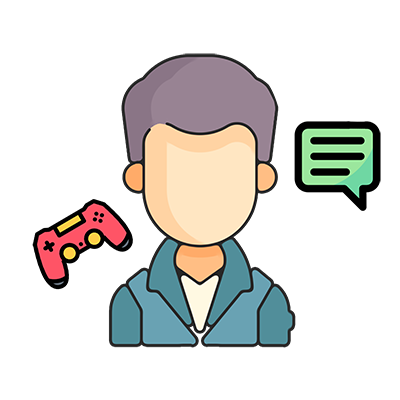Profile and Appearance Settings in Unigram
Previously, we discussed the “Navigation Menu” and provided a brief overview of the settings available in Unigram. In this article, we will delve into profile and appearance settings to help make your messenger experience as comfortable and convenient as possible.
Important: All the descriptions provided pertain to Unigram version 10.1.3.
As a reminder, follow these steps to access a specific settings category:
- Open the navigation menu;
- Select “Settings”;
- Choose the category you are interested in from the list;
- Press the “Tab” key to focus on the button with the name of the selected category, which is located just after the list, and then press “Space.”
After pressing the “Space” key, it may appear as if nothing has happened, as the screen reader will not vocalize anything. In reality, the settings have appeared, but to access them directly, you will need to “step” through numerous items with the “Tab” key. IF you continue to bypass all the items that do not interest you, you will eventually reach the “Back” option. After this button, you will encounter the specific settings that we shall discuss below.
Profile Settings
- Name and Surname: Here you can set or change your name and surname, which will be visible to other users;
- Avatar: You can upload or change your profile picture (avatar). This image will be displayed next to your name in chats and groups;
- About Me: You can add information about yourself, providing others with a brief description, hobbies, interests, quotes, or any other information you’d like to share;
- Phone Number: You can change the phone number that was used during registration.
- Nickname: You can set a unique nickname, which can be used by others to find you on Telegram. It will also be used to create a unique link to your Telegram profile.
Appearance Settings
Let us explore the settings available in this category:
- The “Show All Themes” button allows you to choose one of the four Unigram themes:
- System;
- Light;
- Dark;
- Night.
- The “Chat Backgrounds” button enables you to change the chat background color or select a chat background image. You can choose from available presets or upload a new picture from your computer;
- The “Switch to Night Mode” checkbox allows you to change the application’s interface color scheme from light to dark. Useful for reducing eye strain;
- The “Customize Night Mode” button lets you select a theme for the night mode and set a schedule for automatically switching between modes;
- The “Message Text Size” and “Text Block Size” sliders are the two settings useful for people with visual impairments, allowing you to increase the font and text block size in chats. Changes to text size will be displayed in the same window where you adjust the sliders;
- The “Stickers and Emojis” button provides control over sticker sets, emojis, and reactions accessible in Unigram;
- The “Share” checkbox enables swipe support, which opens a window for sending selected content (e.g., text messages, photos, videos, etc.);
- The “Reply” checkbox enables swipe support, which opens a window for quickly composing a response to a selected message;
- The “Show Gallery in Fullscreen” checkbox, when enabled, allows you to open the gallery with images and media files in fullscreen mode, occupying your computer’s entire screen;
- The “System Spell Check” checkbox allows you to enable or disable automatic spellchecking when writing messages. If this option is enabled, Unigram will analyze your text and check it for typos and spelling errors;
- The “Send on Enter” checkbox determines whether pressing the “Enter” key should be used to send a message or to start a new line of text when writing messages;
- The “Emoji Auto-Replace” checkbox enables automatic replacement of certain text abbreviations or character combinations with corresponding emojis in your messages;
- The “Wide Screen Alignment” checkbox was likely intended for adjusting the appearance and interface display on widescreen monitors or screens. Such settings typically involve modifying column widths, font sizes, and other parameters to optimize screen space usage;
- The “Distance Measure” button, in reality, does not change anything by itself. The actual settings are displayed in the form of a dropdown list with the following options:
- Automatic;
- Kilometers;
- Miles.
Conclusion
With these settings, blind and visually impaired individuals can customize Unigram according to their preferences, making the messenger an even more convenient and enjoyable communication tool.
